Learn the Japanese Alphabet: Hiragana, Katakana and Kanji
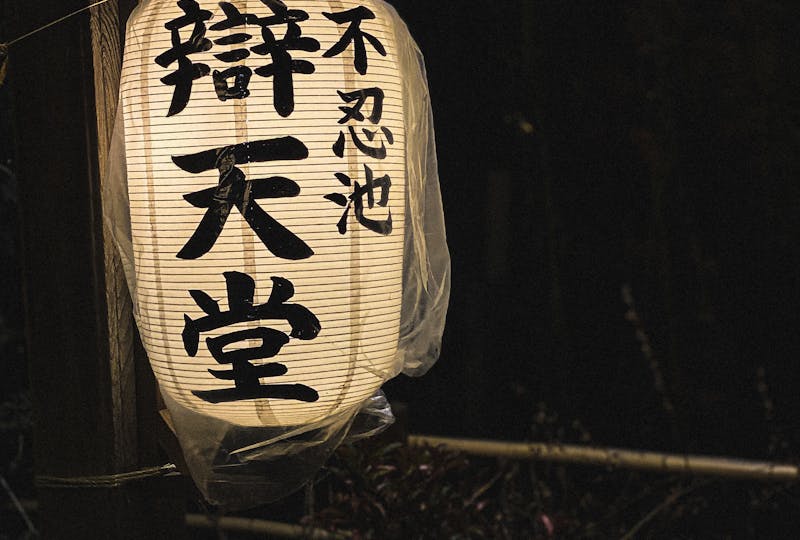
Is the alphabet really as easy as ABC? When you learned the alphabet in English, you actually had to learn two sets of characters: one for uppercase letters and one for lowercase. Then, later, you may have learned a totally different set of characters for the same letters in the form of cursive. For letters that look very different in uppercase, lowercase, and cursive letters (like the letter G), this can be a lot of work for a beginner!
To learn the alphabet in Japanese (hiragana katakana proficiency to be exact), you have to go through a similar process. And that’s without even considering kanji, the monster Japanese writing system with 3000+ characters. Speechling.com can help you learn to pronounce the phonetic building blocks of hiragana katakana as you learn the alphabet in Japanese, but what about writing the alphabet in Japanese?
In this article, we’ll first go over the kana (hiragana katakana), the Japanese equivalent of the ABCs. This is where I started as a little kid learning the alphabet in Japanese. Then, we’ll tackle the big one: kanji.
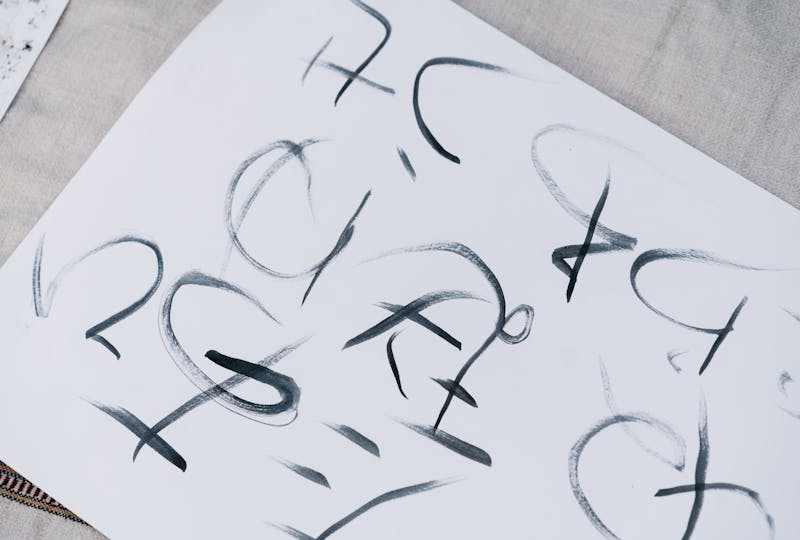
Learning the Japanese Alphabet of Hiragana
According to dictionary.com, "kana" encompasses syllabaries (characters with no specific meaning that correspond to syllables) used in the Japanese writing system. Like individual letters in English, such as “b” and “u,” kana symbols are like building blocks for words and have no individual meanings themselves.
However, unlike the English alphabet, the alphabet in Japanese contains letters that each get their own syllable. In English, we have standalone consonant letters (like “k” and “t”) that don’t form syllables unless they’re connected to other letters, which are usually vowels (like “ka” and “to.”). The alphabet in Japanese, on the other hand, pairs almost all consonants with a vowel sound, so each letter forms a syllable. For example, the letter か is pronounced “ka.”
In Japanese, the two kana (hiragana katakana) alphabets look different, much like uppercase and lowercase letters can look different. To help you learn the alphabet in Japanese, we’ll start with the very basics with hiragana.
Hiragana, originally called onnade (女手), or women's hand (according to Omniglot), is the first form of Japanese language taught to beginners. This is the equivalent of a toddler’s ABCs as they start to learn the alphabet, and if you’re new to Japanese, this is where you should start too.
Developed over centuries, this syllabary consists of 46 characters that express the core sounds of the Japanese language. In this section of this article, you’ll learn about these basic characters, how they work, and what role they play in Japanese written language.
1. Vowels of the Alphabet in Japanese
To begin, let's explore the five fundamental Hiragana characters, which represent the five Japanese vowels.
| Grammar | A (ah) | E | I | O | U |
|---|---|---|---|---|---|
| (ah) | (eh) | (ee) | (oh) | (oo) | |
| Hiragana | あ | え | い | お | う |
The vowels form the first row in Hiragana and set the pronunciation of Hiragana. To hear them pronounced and avoid common issues like diphthongs, I’d highly recommend using Speechling.
2. Adding Consonants in the Alphabet in Japanese
By combining these basic characters with additional symbols in hiragana, we can create new syllables. Most hiragana are simply the five basic vowels with different consonants before them. I’ll break this down in a minute, but here’s a chart of all the hiragana and their pronunciations to help you get an overview as you learn the alphabet in Japanese.
| 1 | あ A | い I | う U | え E | お O |
| 2 | か KA | き KI | くKU | けKE | こKO |
| 3 | さ SA | し SHI | すSU | せ SE | そ SO |
| 4 | た TA | ち CHI | つ TSU | て TE | とTO |
| 5 | な NA | に NI | ぬ NU | ね NE | の NO |
| 6 | は HA | ひ HI | ふ HU/FU | へ HE | も MO |
| 7 | ま MA | み MI | む MU | め ME | よ YO |
| 8 | や YA | ゆ YU | ろ RO | ||
| 9 | ら RA | り RI | る RU | れ RE | |
| 10 | わ WA | を WO | |||
| 11 | んN |
As you can see, rows 2, 5-7, and 9 follow this vowel-consonant pairing pattern exactly. Before you worry about the weird rows that don’t follow the pattern, let’s dissect the normal rows to learn the alphabet in each.
Row 2 is the K row, where every phoneme starts with K..
| Hiragana Character | |
|---|---|
| か | K + あ = ka (as in the first “a” of “mama”) |
| き | K + い = KI (as in “key”) |
| く | K + う = KU (as in “cool” |
| け | K + え = KE (as in “ken”) |
| こ | K + お = ko (as in “correspond”) |
Here are the rest of the rows that abide by this basic pattern.
| Hiragana | Phonetics |
|---|---|
| な | N + あ = NA |
| に | N + い = NI |
| ぬ | N + う = NU |
| ね | N + え = NE |
| の | N + お = NO |
| は | H + あ = HA |
| ひ | H + い = HI |
| ふ | H + う + HU / FU |
| へ | H + え = HE |
| ほ | H + お = HO |
| ま | M + あ = MA |
| み | M + い = MI |
| む | M + う = MU |
| め | M + え = ME |
| も | M + お = MO |
| ら | R / L + あ = RA / LA |
| り | R /L + い = RE / LE |
| る | R / L + う = RU / LU |
| れ | R / L + え = RE / LE |
| ろ | R / L + え = RE / LE |
A quick note on that last row: Japanese doesn’t have a uvular “r” sound like English. Instead, the “r” sound is a flipped “r” similar to the one used in Spanish and Italian. To hear this sound, check out Speechling’s pronunciation resources.
3. Irregular Rows in the Alphabet in Japanese
You have to watch out for these irregular hiragana katakana rows as you learn Japanese, so let’s go over them. Row 3 in the master chart I shared is the S-row, and it’s irregular due to the second character, which breaks the pattern. Do you see it below?
| Hiragana | Phonetics |
|---|---|
| さ | S + あ = SA |
| し | SH + い = SHI |
| す | S + う = SU |
| せ | S + え = SE |
| そ | S + お = SO |
The addition of the “h” to the letter し makes this row irregular. In the T-row, Row 3 in the master chart, we encounter two unique characters: ち (chi) and つ (tsu).
| Hiragana | Phonetics |
|---|---|
| た | T + あ = TA |
| ち | CH + い = CHI |
| つ | TS + う = TSU |
| て | T + え = TE |
| と | T + お = TO |
Next is the Y-row of kana. It seems a bit odd at first glance, with only three characters compared to the usual five. Where did “yi” and “ye” go?
At one point, “yi” and “ye” were indeed part of the kana family, represented by the characters ゐ and ゑ. However, their sounds were very similar to those of “i” (い) and “e” (え), respectively. Over time, as pronunciation shifted and dialects merged, the distinction between these pairs faded. Eventually, they became obsolete. This leaves us with a lesser burden of studying only three characters, which doesn’t seem like anything to complain about as you learn the alphabet in Japanese.
While “yi” and “ye” are no longer used in everyday writing, they might still appear in older texts or literary works. So, keep an eye out for them.
The Y-row (row 8) now consists of:
| Hiragana Katakana | Pronunciation |
|---|---|
| や (ya) | Y + あ = YA |
| ゆ (yu) | Y + う = YU |
| よ (yo) | Y + お + YO |
4. Extras in the Alphabet in japanese
Now looking back at our hiragana katakana chart, we notice the last two rows are pretty strange. Row 10 is our W row, but it only has two characters: わ (pronounced like the “wa” in “want”) and を. This last one is sometimes pronounced “wo,” in “wolf,” but usually it sounds pretty much just like お (oh). So, why keep two symbols? Grammar! を plays a special role in sentences, acting as a particle.
The last character, ん, is the only kana with a single consonant. It’s the equivalent of the nasal “n” consonant in English.
Learn the Alphabet in Japanese: Using Hiragana
Hiragana can sometimes form its own words:
かわいい (kawaii) - "cute"
たべる (taberu) - "to eat"
あさごはん (asagohan) - "breakfast"
However, its main role is in grammar. Hiragana is used to form all the little words and parts of words, like conjunctions, prepositions, and the equivalent of -ly adjective endings, that aren’t covered by kanji Here are some examples:
です (desu) - A polite sentence ender
が (ga) - Like the English “is,” this is a particle used to mark the subject in a sentence
を (wo) - This particle shows the direct object of a verb
When you’re learning the alphabet in Japanese, this hiragana function becomes particularly important. As we’ll see later in this article, kanji, the famous pictograph-like characters, form nouns and verbs. Hiragana is used to fill in all the gaps–conjunctions, prepositions, you name it. Here are some examples:
そして (soshite) – “and”
から (kara) – “from”
でも (demo) – “but”
しかし (shikashi) – “however”
Finally, hiragana is often used as furigana. Since there are thousands of kanji and it takes years and years of schooling to learn them all, furigana act as training wheels to help language learners get by in the meantime. These small characters are written above or together with kanji characters to show how they should be read. You’ll often see this in books or other written content meant for kids, including manga.
Writing in the Hiragana Alphabet in Japanese
Want to write hiragana by hand? You have to learn about stroke order. Since stroke order is important for all Japanese writing, I encourage you to read this article on stroke order before moving forward with our hiragana katakana journey.
What if you want to type hiragana, on PC and Mac? You usually need to install additional input methods or language packs to enable Japanese writing support. This will let you type in Japanese and use voice-to-text, which is incredibly useful while you’re learning. Here's how to go about it:
On a Windows computer: Settings => Attach Time & Language => Choose Language => Add a Language => Install. After installation, you can select Japanese by clicking on the taskbar's language icon to switch between input languages.
On Mac: System Preferences => Keyboard Preferences => Input Sources => Incorporate Japanese data => Add. Then, Options => Configure Input Settings to get it working. You can then choose your input source by clicking on the input menu (which resembles a flag) in the menu bar and choosing yourJapanese input method.
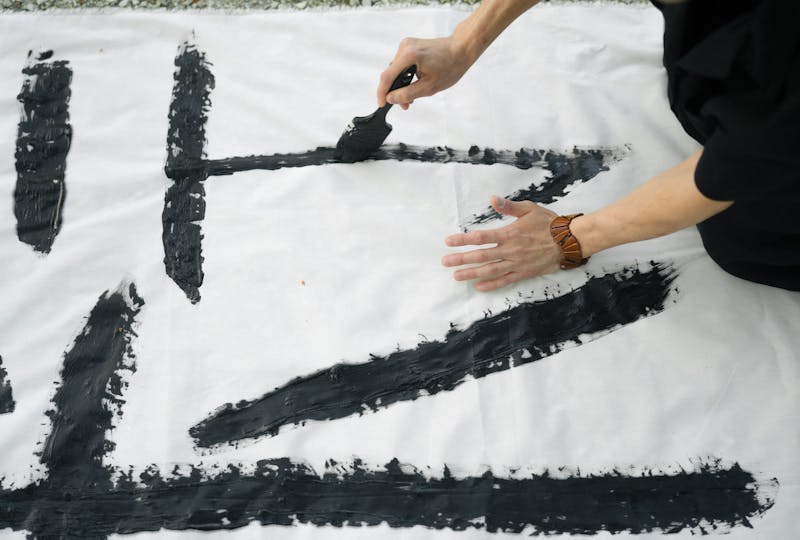
Learning the Hiragana Katakana Characters
Alphabet in Japanese (10k-100k, low)
Hiragana katakana (1k-10k, low)
Learn the Alphabet (1k-10k, low)
When learning the alphabet in Japanese, hiragana katakana are always your first stops. By really working to memorize the hiragana characters, learn their sounds with help from Speechling, and develop the habit of practicing stroke order, you can build a solid foundation to learn the rest of the alphabet in Japanese. The second alphabet, katakana, has a lot in common with hiragana, so your work here will make a huge difference as you move forward.
Now that we’ve covered hiragana in depth, let’s move on to its twin–katakana.
Learning the Katakana Alphabet in Japanese
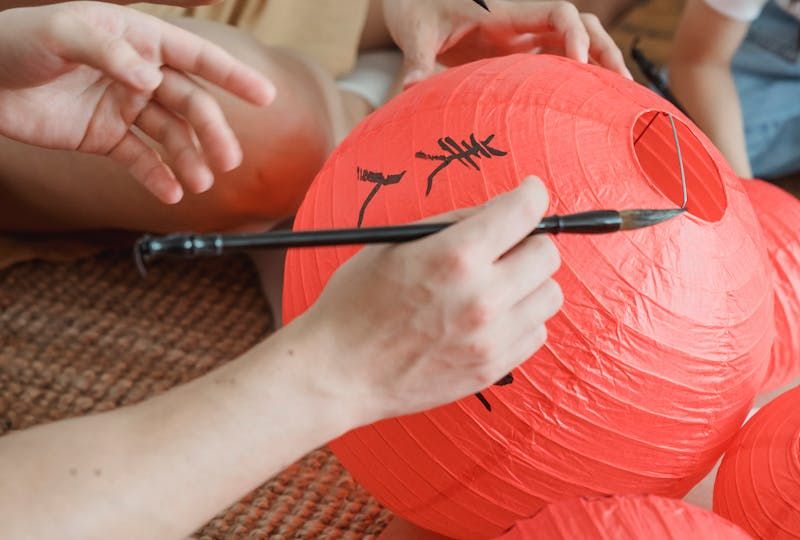
Learning the Katakana Alphabet in Japanese
Katakana, or "fragmentary kana," is a form of Japanese writing style used for newer words of Western origin—that is, words borrowed from other languages or countries. It’s used primarily for foreign words and onomatopoeic expressions, playing a unique role in the Japanese writing system.
While hiragana and kanji are widely known, katakana is a bit of a weird one. It emerged during the Heian period (794-1185) as a reduced form of kanji designed for easier reading and writing. However, over time, a different usage developed, and katakana became the default Japanese alphabet for words and borrowed terms.
Katakana consists of 46 characters, each representing a specific syllable, one-for-one with hiragana. Unlike hiragana, which has rounded shapes, katakana characters are angular and straight. Just check out the chart below. Each sound (S) is matched with its corresponding hiragana (H) and katakana (K) character.
| S H K | S H K | S H K | S H K | S H K | S H K |
|---|---|---|---|---|---|
| 1 | A あ ア | I い イ | U う ウ | E え エ | O お オ |
| 2 | KA か カ | KI き キ | KU く ク | KE け ケ | KO こ コ |
| 3 | SA さ サ | SHI し シ | SU す ス | SE せ セ | SO そ ソ |
| 4 | TA た タ | CHI ち チ | TSU つ ツ | TE て テ | TO と ト |
| 5 | NA な ナ | NI に ニ | NU ぬ ヌ | NE ね ネ | NO の ノ |
| 6 | HA は ハ | HI ひ ヒ | FU ふ フ | HE へ ヘ | HO ほ ホ |
| 7 | MA ま マ | MI み ミ | MU む ム | ME め メ | MO も モ |
| 8 | YA や ヤ | YU ゆ ユ | YO よ ヨ | ||
| 9 | RA ら ラ | RI り リ | RU る ル | RE れ レ | RO ろ ロ |
| 10 | WA わ ワ | WO を ヲ | |||
| 11 | N ん ン |
Using the Katakana Alphabet in Japanese
Katakana has a few specific usages that make both hiragana katakana necessary. Let’s take a look at them here.
Foreign Loanwords
Katakana is predominantly used to write loanwords from various languages. English words like コーヒー (kōhī – coffee), ピザ (piza — pizza), and サンドイッチ (sandoitchi – sandwich) are commonly written in katakana. This system allows the Japanese to adapt foreign words while preserving their unique pronunciation.
Onomatopoeic Expressions
Katakana is also the go-to script for onomatopoeic words and sound effects, which are extremely common in Japanese. Some examples include:
ゴロゴロ (gorogoro–rumbling or rolling sound)
ピカピカ (pikapika—sparkling)
ドキドキ (dokidoki—texcitement, the beating of a thumping heart)
Pop Culture and Visual Impact
Due to its distinct, angular appearance, katakana is often employed in popular culture, fashion, and advertising. It adds a modern and eye-catching touch to designs, logos, and merchandise. It now has a particular relationship with manga and anime due to its usage in the onomatopoeic expressions mentioned above.
Learning the Japanese Alphabet of Katakana
Katakana should be the second Japanese alphabet you tackle after hiragana, which is far more important to Japanese. If you start with hiragana, you’ll already know all the sounds, which will help you learn much faster.
Just like hiragana, katakana has that important stroke order. When writing the characters, don’t forget to learn this. Stroke order is especially important for katakana because some of the characters are really similar to each other. Take, for instance, the characters シ (shi) and ツ (tsu). They might seem almost the same at first glance! The difference is that シ (shi) has horizontal strokes, while ツ (tsu) has vertical ones. That’s the only way to tell them apart.
Here are the biggest lookalikes you’ll need to watch out for:
| Column 1 | Column 2 | Column 3 |
|---|---|---|
| FU ふ フ | N ん ン | SHI し シ |
| WA わ ワ | SO そ ソ | TSU つ ツ |
Okay, now it’s finally time to move on to the big one: kanji. Brace yourself!
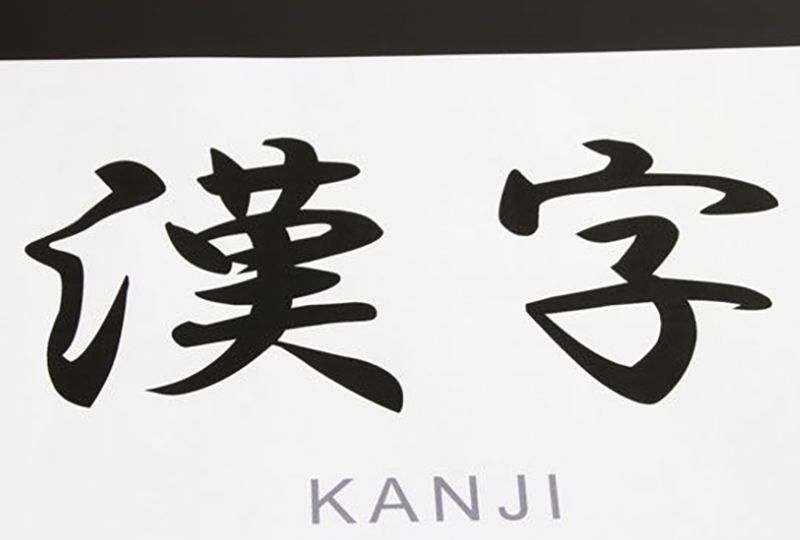
Learning the Japanese Alphabet of Kanji
Learning the Japanese alphabet starts with hiragana katakana, but it ends with the most complex of the three major Japanese writing styles. Kanji was widely used during the Old Japanese time and still in use today, and it’s the most distinctive of the three Japanese alphabets, as well as a huge barrier for entry into Japanese literacy.
What Is the Kanji Japanese Alphabet?
Kanji are like picture symbols, or pictographs, in the alphabet in Japanese. Each one stands for a word or an idea. For instance, the kanji for "tree" (木) resembles the branches and trunk of a tree.
Many people think that kanji are pictures that represent the words they stand for, but that's not entirely accurate. While some kanji do look like what they represent, not all of them do. Kanji symbols can be used on their own, or you can mix them with other kanji or kana to make new words or express different ideas. Their pronunciation and meanings change depending on what other kanji or hiragana katakana they're paired with.
Take The kanji compound "食堂" (shokudo). This means "cafeteria” as a compound, with the individual kanji "eat" (食) and "hall" (堂). Makes sense, right?
Also, have I mentioned that there are THOUSANDS of kanji?
Before you have a heart attack, let’s talk about how this crazy writing system came to be.
A Brief Kanji History
Kanji is actually derived from Chinese. In China, hanzi, or 漢字 in traditional script and 汉字 in simplified script, developed during the Shang Dynasty (1600 to 1046 BC). Anthropologists found these characters carved into turtle shells—some of the oldest examples of writing in China.
Before 500 or 600 AD, Japanese was mainly spoken without a writing system. But during the Yamato era, a scholar named Wani from Korea came over and introduced Japan to Confucianism and kanji. This coincided with the growth of trade and Buddhism and provided a helpful way for Japanese monks, government workers, and traders to write things down.
But there was a bit of a problem: kanji didn't quite fit with how Japanese grammar worked. So, people came up with a new way of writing to make kanji fit better with Japanese. This new writing system eventually became hiragana.
Even though women weren't usually educated back in the day, they played a big role in shaping the Japanese writing system. For example, Murasaki Shikibu, a poet during the Heian era and wrote "The Tale of Genji,” helped shape the writing system into what it is today.
Is Kanji Really Necessary?
Having three Japanese alphabets might seem a bit odd and complicated. You might think that Japan should simplify things and ditch kanji, which some other Asian languages, such as Korean, have done. But for now, that's not happening. Japanese still needs kanji.
Even though learning them is a huge pain, kanji aren’t just historically significant; they’re actually useful. They play a big role in making sentences clear in Japanese. Without them, understanding the meaning of compound words and sentences can be nearly impossible.
Japanese doesn't use spaces to separate words, so if you skip the kanji, you get a long string of kana symbols all jumbled together. Unless you're really good at Japanese or reading something like a kids' book, this gets difficult very quickly.
Take a look at this example, which translates to “Next Saturday, I’m planning on meeting up with friends.”
With kanji: 来週の土曜日には友達に会うつもりです。
Without kanjiL らいしゅうのどようびにはともだちにあうつもりです。
In the kanji sentence, instead of a string of endless letters, we get the following kanji for all our nouns and verbs:
来週 (next week)
土曜日 (Saturday)
友達 (friend)
会 (meet)
The hiragana katakana provide extra details, but without the kanji, it'd be a big mess and hard to figure out what it's saying. Plus, once you’re used to them, especially compound kanji, you get really fast at reading.
Also, there are lots of homonyms in Japanese—words that sound the same but have different kanji. Take the word "kanji,” for instance. When spoken, it can mean either kanji like we’ve been discussing here or or "emotion." When written, there’s no ambiguity between 漢字 (Chinese letters) and 感じ (feeling).
This isn’t even to mention the historical significance of kanji. At this point, kanji has been used in Japan for thousands of years. These beautiful characters are used in art and are famous throughout the world. I know plenty of Americans who wear kanji characters on their clothing or even get kanji tattoos because they think the Japanese alphabet is so cool! So, in my opinion, kanji isn’t going anywhere.
How Many Kanji Do I Need to Know to Learn the Alphabet in Japanese?
Hopefully, you’re not convinced as to why kanji has to stick around. So, how many of them do you need to learn? Brace yourself.
There are over 50,000 kanji, but don't panic just yet. A lot of these are kind of old-fashioned or rare, so you don’t have to learn all of them. On June 7, 2010, the Japanese Council for Cultural Affairs updated the Joyo kanji list, which now includes 2,136 essential kanji characters. These special kanji are called "jōyō kanji." This list is derived from "tōyō kanji," which was created right after World War II for high school-level kanji.
While there are more kanji used in everyday writing, especially in academic or news articles, these 2,136 "jōyō kanji" are the ones considered essential for education and literacy in Japan. This means that to learn the alphabet, you only need to know about 2,000 of them to read the newspaper in Japanese (yes, I know….questionable use of “only” there).
The jōyō kanji list isn't like a big encyclopedia of every single character and reading people use; it's more like a starting point for literacy. It's what you're expected to know after finishing school, and it's also the characters and readings allowed in official government papers. If you're very educated, you might know up to 8,000, but that's really going above and beyond.
For Japanese kids, the 2,136 kanji in the jōyō kanji are split like this:
Elementary School (Grades 1-6): 1,026 (kyōiku kanji)
Middle School (Grades 7-9): 1,110
How to Learn the Japanese Alphabet of Kanji
Wondering where in the world to start? How do you figure out the translations, readings, pronunciations, and learn the alphabet of kanji? Well, first, learn your hiragana katakana! Learning the kana will give you the phonetics, stroke order knowledge, and language building blocks you need to start learning kanji. Once you’re ready, here’s how I recommend tackling learning the Japanese alphabet of Kanji.
Order of Learning Kanji
When it comes to figuring out the best order to learn them, well, there are a few different ways to go about it. If you’re a true beginner and you’re not taking a class, I’d recommend following the order in which kanji are taught in Japanese schools. This has been designed to help you build knowledge as you go, and you'll find it easier to read simple kids' books sooner, which can reinforce your learning.
You can also follow the JLPT test lists. For foreigners learning Japanese, the Japanese-Language Proficiency Test (JLPT) is the standard test serious students prepare for. It covers reading, speaking, vocabulary, grammar, and other parts of the Japanese language.
The JLPT has five levels, with N5 being the easiest and N1 being the hardest. Even if you’re not actually studying for the test, following their prescribed levels can give your studying some structure. You can also actually sign up to take the test, as getting ready for the JLPT can help you stay motivated and organized as you learn.
If you’re thinking of moving to Japan, the JLPT is a must. In Japan, having a JLPT license can help you get into good schools and get jobs. Some employers and universities even accept certain JLPT scores as proof of eligibility for admission or a visa.
Whether or not you use the JLPT study structure, as you get better, you can start learning as you go. I never attended school in Japan, although I have spoken Japanese since I was a baby, so I never got the full kanji school experience. However, I’ve figured out my own way of studying kanji. I do a lot of singing in Japanese, and I’m trying to bolster my Japanese kanji vocabulary, so I usually learn the kanji for the Japanese songs I sing. You can do the same with any text, from a newspaper article to a website or manga.
How to Learn the Japanese Alphabet of Kanji
Unlike with hiragana katakana, which is pretty straightforward, the best method for learning kanji can vary from person to person. However, when you learn kanji, there’s a lot you need to learn:
The meaning or meanings of the character
The different readings of the character (most have at least two; some have four or five!)
The stroke order
Compound words containing the character
Yikes! To avoid becoming overwhelmed, you may want to start with simply learning the meanings of the kanji. Even if you don't know how to say the kanji out loud, if you understand what it means, you can still understand the sentence. Then, once you know the meanings of some of the characters, you can start learning their readings. My father, who learned Japanese in his twenties after moving there from the US, used this method, and he still reads Japanese decades later.
I’ve written quite a bit about some of the amazing tools that can help you get started learning kanji, so be sure to check those out. From digital flashcards to online quizzes, there are so many resources out there to help you tackle this enormous task one character at a time.
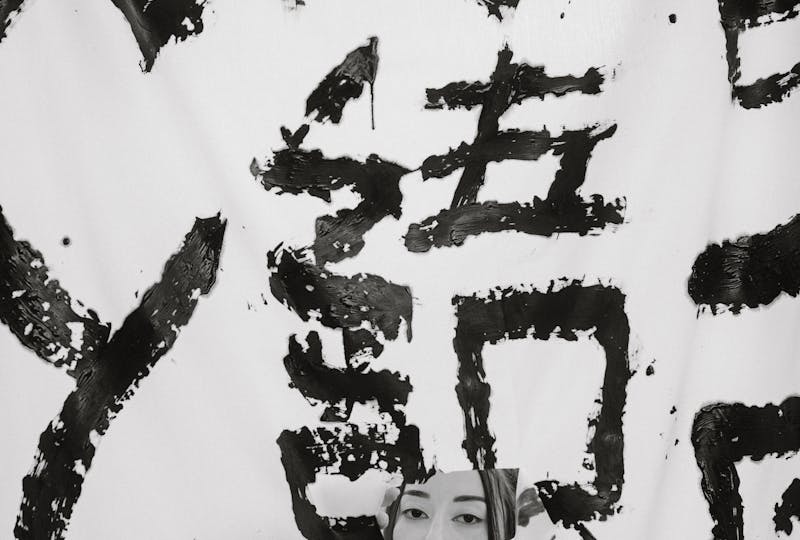
Learning Japanese Writing Styles with Speechling
Learning any language is difficult at first, especially for beginners and even intermediates. It could be disappointing seeing that you accidentally read the character 六 as “big” because it looks similar to 大, or that you cannot write a simple statement in hiragana after several difficult weeks of learning the language. But don’t worry—just find a system that works for you, stick with it, and you’ll improve!
As you’re working on learning the Japanese alphabet of hiragana katakana and kanji, don’t forget to study pronunciation too. My dad is from Wisconsin, and like I mentioned, he learned to read and write Japanese as an adult, but he focused a lot on the difficult written language and not much on pronunciation. I really wish he’d had a resource like Speechling too to help him clean up his speaking skills while he learned.
With the Speechling app, you can use native speakers (both recorded and in real time) to help you master japanese pronunciation. Japanese is phonetically so different from English that if you’re an English speaker, this is a must. With repetition exercises, feedback and conversational fluency from native Japanese speakers, Speechling helps you get more personalized speaking coaching than you can get in a classroom or from any other app. That way, you’ll actually be able to read the Japanese alphabet you’re learning out loud with good pronunciation.
So grab your hiragana katakana flashcards, download the Speechling app, and get ready to learn the alphabet in Japanese—both spoken and written. 頑張って!
